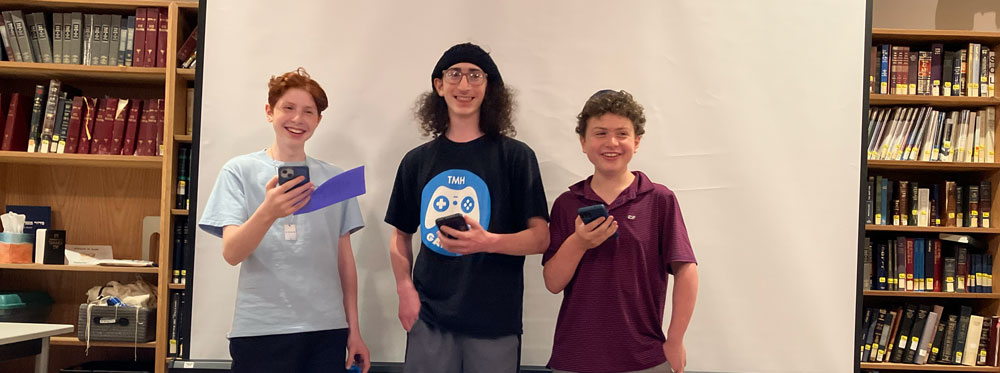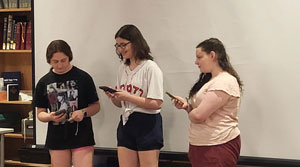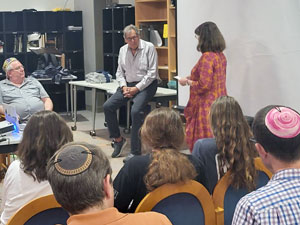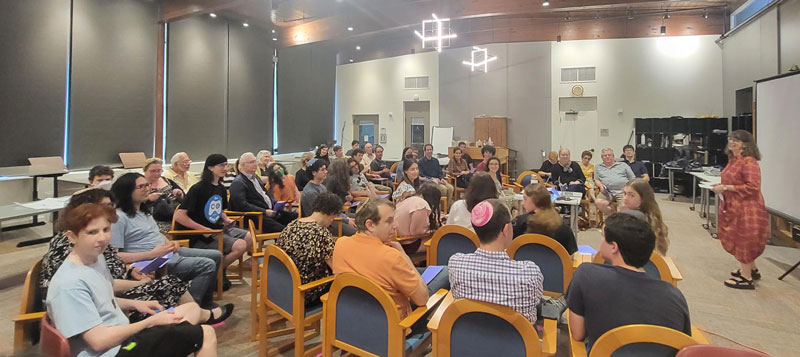Jewish learning Teens Explore the Big Questions of Today Through Talmud

Each year when I choose a masechet of Talmud to learn at Hebrew College Teen Beit Midrash (TBM) I wonder if it will speak to our teens and to the moment we were living in. The first chapter of Berachot, which we studied this year, begins with when and how we say the Shema, but soon evolves into discussions about how we stay in relationship with God and how God stays in relationship with us when times are hard. Certainly when I chose this chapter I had no idea what a year it would be.
Rabba Claudia at Project Night 2024
One set of answers that spoke to me this year is found on daf (page) 6a where Rav Yitzchak, who lived in the late third century in Israel when famine was rife, asks where we can find God today. First he suggests that God is found when we come together as a congregation. Then he suggests that God is found in a minyan of ten when we come together to pray. But unlike our patriarch, Avraham who stopped negotiating with God at 10 people to save Sodom and Gemora, Rabbi Yitzchak goes smaller. He finds God in a traditional court of three when the judges deliberate to find the truth of a matter. He also finds god in the hevruta (paired study) which he derived from the pasuk.
That is where I too find God. Our Beit Midrash feels like a holy place, this year especially. We came together and were our authentic Jewish selves. TBM teens carved out time in their very busy weeks to learn whatever text we present, are showing up not just for themselves, but for all of the Jewish people and all of the world.
The question of why bad things happen does not have one or perhaps any answer. But that is why we learn Talmud, a text that has many answers because maybe one will be the right one today, and another the one we need tomorrow. Working with the text teaches us how to sit with multiple narratives.
>> WATCH THE PROJECT NIGHT SLIDESHOW

TBM Teens performing their original song “How Does God Pray?” at Project Night

In our online group we had several works of art depicting how to say Shema and how King David studied and slept. There was a talk and a video about demons and how they were used by the Rabbis to discuss what we fear.
After each presentation students, parents and grandparents asked questions which our teens answered with intelligence and grace. I am so proud of these students and honored to teach and learn alongside them.
Registration for 2024-2025 Teen Beit Midrash and our Moot Beit Din team will begin in June. for more information contact us through our website or cmarbach@hebrewcollege.edu


